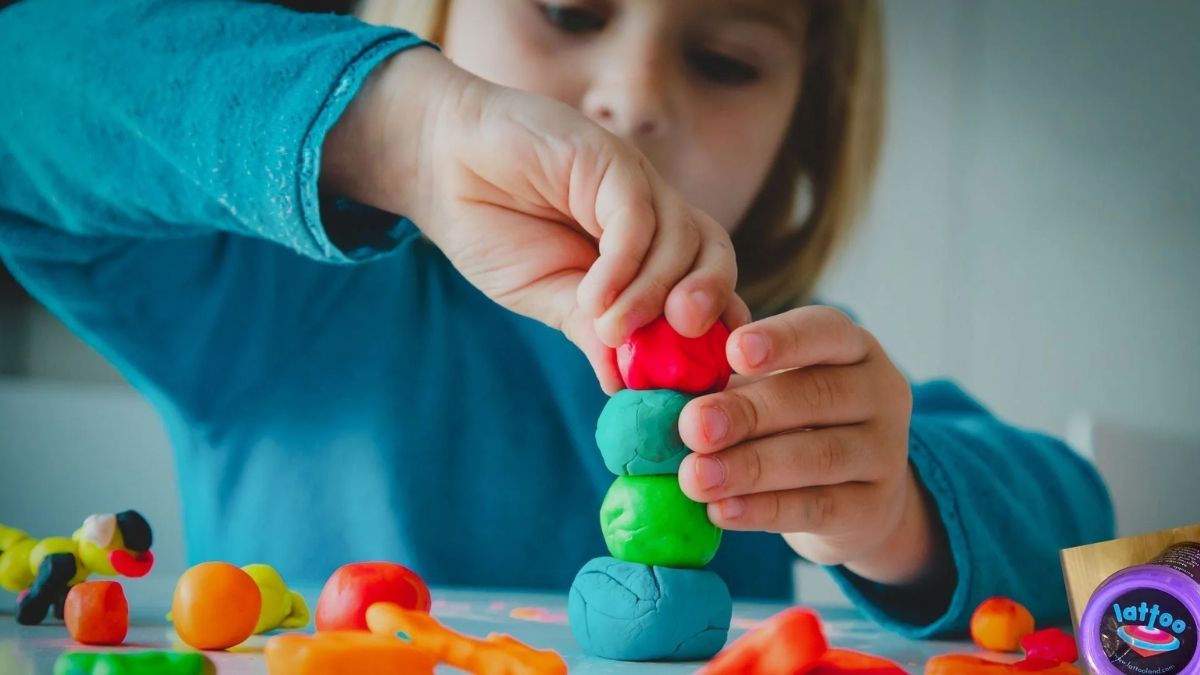FITNESS
Worried about building an extensive product range diversity? Here’s what you can do.

In the competitive landscape of the B2B footwear industry, buyers face the constant challenge of maintaining a diverse and appealing product range. The constant need to meet the evolving demands of their customers while ensuring that their offerings remain fresh and relevant can impact overall sales.
Limited availability of correct kits, colours, materials, and outsoles can significantly hinder business growth. Besides, constraints in time, budget, and manpower often make it difficult to allocate resources for new product development.
That is exactly why opting for reliable footwear suppliers can make all the difference. Foot On Shoes, a leading footwear supplier in india, boasts of an effective and hassle-free product development process.
This article aims to address these common problems and provide actionable solutions that can help businesses navigate the complexities of product range diversity.
Common Problems Faced by B2B Footwear Buyers
Buyers often encounter various problems pertaining to product development, which ultimately lead to gaps and missed deadlines, failure to build product range, loss of sales, and more.
Knowing more about the issue aids in choosing the right footwear manufacturer!
1. Availability Issues
One of the most pressing challenges in the B2B footwear market is sourcing the correct kits, colours, materials, and outsoles. Many buyers find themselves struggling to find the right supplier. The inability to find reliable suppliers who can consistently deliver the order can mess up the entire bottom line.
Besides, missed deadlines and long product development times can prevent timely product launches. This has a significant impact on sales and brand reputation. Also, ensuring the manufactured footwear meets quality standards is important to maintain a reputation in the market.
Thus, availability issues can lead to delays in product development and ultimately affect sales.
2. Limited Resources
Footwear buyers often face significant constraints that limit their ability to effectively diversify their product ranges. Time constraints are a major challenge, as the pressure to quickly respond to rapidly changing market trends can overwhelm teams, leading to rushed decisions that compromise quality and innovation.
Budget limitations also hinder progress, as financial restrictions prevent companies from investing in new product development or expanding their supplier networks to source a wider variety of materials.
These constraints, a combination of time pressure, financial restrictions, and manpower shortages, create a challenging environment for footwear buyers looking to expand their product ranges and stay competitive in the rapidly evolving market.

3. Dealing with Multiple Suppliers
Managing relationships with multiple suppliers can significantly complicate the procurement process for footwear buyers. One of the primary challenges is communication. Coordinating with various suppliers often leads to misunderstandings and errors that can disrupt production timelines.
Inconsistent quality across different suppliers poses another hurdle. It’s important to understand that varying standards can make it difficult to maintain a uniform product quality. This can significantly impact the brand reputation negatively.
How FOS Can Help In Overcoming Product Range Diversity Challenges?
Foot on Shoes, one of the reliable women shoe manufacturers, offers effective footwear solutions. With more than four decades of experience in the industry, the brand understands the nuances and complexities involved.
Resolving the product range diversity issue is a matter of great importance at Foot On Shoes.
Here is how the leading Indian shoes manufacturing company figured out the solution –
Offering the Latest Kits and Materials
One effective strategy FOS uses to remain competitive in the fast-paced footwear market is the correction utilization of technology. Implementing smart tech and rapid prototyping tools helps speed up the product development cycle. This allows the brand to bring fresh products to market more quickly and efficiently. Besides, engaging clients early in the design process through feedback loops ensures that the new products align with their needs and preferences.
Consolidation of Development to Free Resources
Consolidating development efforts is a strategic approach that can significantly free up valuable resources for the footwear brands. Partnering with a reliable leather shoes manufacturer aids in streamlining the product development processes and enhances collaboration across different functions. This dedicated focus allows brands to reduce redundancies and improve efficiency, ultimately leading to faster turnaround times for new product launches.
Minimizing Hassles
Minimizing the complexities associated with managing a diverse product range is essential for enhancing operational efficiency as footwear suppliers. One of the most effective ways to achieve this is by implementing advanced inventory management systems. Working with trustworthy Private label footwear manufacturers ensures there are no missed deadlines, leading to unnecessary worry and anxiety during critical events or exhibitions.
Foot On Shoes: Your Reliable Footwear Manufacturing Partner
Emphasizing product range diversity is essential for sustainable growth in the footwear sector. By addressing common challenges such as availability issues, limited resources, and supplier management, businesses can position themselves for success.
Looking for a footwear manufacturer to help build your product range diversity? To know more, visit the website or schedule a call!
FITNESS
The Benefits of Using Dough Moulding Compound in Educational Settings

Introduction to Dough Moulding Compound (DMC)
Imagine a material that can ignite creativity, enhance learning, and transform the classroom experience. Enter dough moulding compound (DMC), an innovative tool that’s making waves in educational settings. This versatile medium not only inspires imaginative projects but also fosters essential skills among students of all ages. With its unique properties and endless possibilities, DMC is quickly becoming a staple in classrooms around the globe. Let’s explore how this exciting material can revolutionize education and open up new avenues for teaching and learning.
The History and Development of DMC
Dough Moulding Compound (DMC) has an intriguing history that dates back several decades. Initially developed as a versatile material for industrial applications, it found its way into educational settings due to its unique properties.
In the early days, DMC was primarily used in manufacturing processes where durability and flexibility were essential. Its ability to mimic the intricacies of various textures made it appealing for creative projects.
As educators began to recognize its potential, DMC transitioned from factories to classrooms. The compound’s non-toxic nature and ease of use contributed significantly to this shift. Teachers discovered that it fostered creativity and fine motor skills in students.
The evolution of DMC is marked by continuous innovation. Today, it’s available in numerous colors and formulations tailored specifically for educational purposes, allowing teachers to engage students through hands-on learning experiences like never before.
Advantages of Using DMC in Educational Settings
Dough moulding compound (DMC) offers a plethora of benefits in educational environments. First and foremost, it fosters creativity among students. The malleable nature of DMC allows children to explore various shapes and forms, turning their ideas into tangible creations.
Additionally, using DMC enhances fine motor skills. As students manipulate the material, they develop hand strength and coordination essential for writing and other tasks. This hands-on approach makes learning engaging and fun.
Moreover, DMC is environmentally friendly compared to many traditional materials. Non-toxic and safe for use by young learners, it provides peace of mind for educators concerned about safety in the classroom.
Implementing DMC encourages collaboration among peers. Group projects involving this versatile compound promote teamwork as students brainstorm together to create unique designs or solutions.
Innovative Uses of DMC in Teaching and Learning
Dough moulding compound is transforming the classroom experience. Educators are using it to create hands-on learning opportunities that captivate students.
In art classes, DMC allows children to express their creativity without limits. They can sculpt figures or build models, making abstract concepts tangible. This tactile approach enhances memory retention and understanding.
Science lessons also benefit from this versatile material. Students can model geological formations or biological structures with ease. This interactive element fosters curiosity and encourages inquiry-based learning.
Moreover, DMC is being used in special education settings. It provides sensory feedback for students who may struggle with traditional teaching methods. The flexibility of DMC makes it an ideal tool for differentiated instruction.
Teachers have even integrated technology by combining DMC with digital tools like 3D printing. Students first shape their ideas with the compound before creating a virtual representation, bridging the gap between physical and digital creation.
Case Studies: Success Stories of DMC in Schools
One remarkable case comes from a primary school in California. Teachers introduced dough moulding compound into art classes, sparking creativity among students. Kids crafted intricate models that brought their imaginations to life.
In another instance, a special education classroom integrated DMC to enhance fine motor skills. Students engaged with the material, rolling and shaping it while developing dexterity. The tactile nature of DMC made learning enjoyable and effective.
A high school in Texas utilized dough moulding compound during science lessons on geology. Students created 3D representations of landforms and rock types, deepening their understanding through hands-on experience.
These success stories showcase how DMC can transform educational environments by fostering engagement and practical skills across various subjects. Each example highlights the potential for growth when innovative materials are embraced in teaching methods.
How to Incorporate DMC into Curriculum and Lesson Plans
Incorporating dough moulding compound into lesson plans can ignite creativity in students. Start with art classes, where DMC serves as a versatile medium for sculpting projects. Encourage students to create 3D models of historical landmarks or scientific concepts.
Math lessons can also benefit from this material. Use DMC to demonstrate geometric shapes and spatial relationships, making abstract ideas tangible.
Integrate storytelling by having students craft characters or settings from their favorite books using DMC. This hands-on approach enhances comprehension and engagement.
For science topics, explore properties of materials through experiments involving DMC. Students can observe how it hardens over time and discuss its applications in real-world scenarios.
Promote teamwork by assigning group projects that require collaboration in creating larger sculptures or installations with dough moulding compound. This fosters communication skills while allowing creative expression.
Conclusion: Why Every School Should Consider Using DMC
As educators seek innovative ways to engage students, dough moulding compound (DMC) stands out as a versatile tool. Its unique properties make it an excellent medium for hands-on learning experiences that can enhance creativity and critical thinking in the classroom.
The benefits of using DMC are substantial. It not only fosters imaginative play but also encourages collaboration among students. The tactile nature of DMC allows learners to experiment and express themselves artistically while developing fine motor skills.
Integrating DMC into various subjects offers endless possibilities. From art projects to science experiments, this material can bring lessons to life, making abstract concepts more tangible. By embracing its potential, schools can create dynamic environments where children thrive.
With successful case studies demonstrating its impact in classrooms across the globe, it’s clear that many educational institutions have reaped the rewards of incorporating DMC into their teaching methodologies. These success stories reveal how engagement levels soar when students interact with materials they find enjoyable and stimulating.
Incorporating dough moulding compound into lesson plans is straightforward and flexible. Educators can adapt activities based on age groups and learning objectives seamlessly. This flexibility ensures that all students benefit from creative exploration tailored to their needs.
Schools looking for fresh ways to motivate learners should seriously consider adopting DMC in their curriculum design. By doing so, they enhance educational experiences while inspiring future generations through creativity and innovation.
FITNESS
Connecting Generations: The Impact of the Imamia Student Organization on Young Muslims

Introduction to the Imamia Student Organization (ISO)
In a world where cultural connections often fade, the Imamia Student Organization (ISO) stands as a beacon of hope for young Muslims. This dynamic organization strives to bridge the generational gap within the Muslim community, fostering unity and understanding among diverse age groups. With its vibrant activities and inclusive initiatives, ISO creates an environment where tradition meets modernity. Young Muslims find not just a platform for expression but also a sense of belonging in their faith and culture. Let’s delve into how this powerful organization shapes lives and strengthens bonds across generations.
The Mission and Goals of ISO
The Imamia Student Organization (ISO) is driven by a clear mission focused on fostering community and spirituality among young Muslims. It aims to create an environment where students can thrive academically while nurturing their faith.
One of its primary goals is to encourage active participation in social, cultural, and religious activities. This engagement helps develop leadership skills essential for the next generation.
In addition, ISO promotes understanding and awareness of Islamic teachings. By organizing workshops and events, members are empowered to explore their faith deeply.
Another vital aspect of ISO’s mission is building intergenerational connections. The organization believes that wisdom from older generations can guide younger members as they navigate contemporary challenges.
Through these efforts, the Imamia Student Organization cultivates a sense of belonging. Members find camaraderie in shared experiences while embracing their identity as young Muslims in today’s world.
How ISO Brings Together Generations
The Imamia Student Organization creates a vibrant space where young Muslims can connect with their elders. Through workshops, seminars, and community events, ISO fosters intergenerational dialogue.
You’ll find students sharing ideas with seasoned professionals who have walked similar paths. The exchange of knowledge thrives in this supportive environment.
Mentorship programs are a cornerstone of ISO’s efforts to bridge the gap between generations. Young members gain insights from those who have faced challenges and achieved success.
Cultural events also play a vital role in uniting different age groups. These gatherings celebrate shared heritage while allowing younger members to learn about traditions directly from their elders.
This blend of learning and celebration strengthens bonds among participants, creating lasting relationships that transcend age barriers within the Muslim community.
Impact of ISO on Young Muslims
The Imamia Student Organization plays a pivotal role in shaping the lives of young Muslims. Through its various initiatives, ISO fosters a sense of belonging and community among students.
Members gain valuable skills that extend beyond academics. Workshops on leadership and public speaking prepare them for future challenges. The organization encourages critical thinking, allowing youth to express their thoughts freely.
Moreover, ISO emphasizes cultural heritage. Events focused on Islamic teachings help young Muslims connect with their roots while navigating modern society. This blend of tradition and contemporary issues resonates deeply with members.
Peer mentorship is another crucial aspect. Experienced members guide newcomers, creating bonds that transcend generations. These relationships enrich personal growth and promote an inclusive environment where everyone feels valued.
In essence, the impact of ISO goes far beyond educational support; it nurtures well-rounded individuals ready to contribute positively to their communities.
Personal Testimonials from ISO Members
Maria, a university student, shares her journey with the Imamia Student Organization. “Joining ISO transformed my college experience,” she says. “I found a community that understands my values and aspirations.”
Ali, another member, highlights the friendships he has built through various activities. “These relationships span generations. My mentors are just as invested in my growth as my peers are.”
For Sara, ISO became an avenue for leadership development. She notes, “The organization encouraged me to step out of my comfort zone and embrace new responsibilities.”
Members often describe events like workshops and interfaith dialogues as eye-opening experiences. They foster discussions that bridge generational gaps while addressing contemporary challenges.
Every story shared within ISO reflects personal growth and collective strength among young Muslims navigating today’s world together. The voices echo a shared purpose: unity across ages through mutual understanding and respect.
Challenges and Controversies Surrounding ISO
The Imamia Student Organization (ISO) has faced its share of challenges since its inception. As with many organizations, differing opinions can lead to internal conflict. Some members feel that the group should focus more on community outreach, while others prioritize religious education.
External perceptions also play a role in shaping ISO’s narrative. Critics sometimes misunderstand its mission or misrepresent its activities. This often leads to unwarranted scrutiny and skepticism from outside communities.
Additionally, navigating intergenerational perspectives presents hurdles for ISO. Younger members may seek modern interpretations of traditions, while older generations often emphasize adherence to established practices. Finding common ground is essential but can be difficult at times.
These issues require open dialogue and understanding within the organization, emphasizing growth through constructive conversations rather than division.
Future Outlook for ISO and its Role in Uniting Generations
The future of the Imamia Student Organization looks promising as it continues to adapt to the changing needs of young Muslims. With technology at its fingertips, ISO has an opportunity to enhance engagement through virtual platforms. This can foster connections beyond geographical boundaries.
Innovative programs tailored for youth are essential. By focusing on skill development and leadership training, ISO ensures that younger generations are equipped for future challenges. Workshops and mentorship initiatives align with this vision.
Moreover, fostering intergenerational dialogue remains a cornerstone of their mission. Encouraging collaboration between seasoned members and newcomers creates a richer community experience.
As society evolves, so must ISO’s approach to inclusivity and representation within its ranks. Embracing diverse perspectives will strengthen unity among all age groups in the Muslim community. The path ahead is filled with potential as ISO works diligently toward bridging generational gaps in meaningful ways.
Conclusion
The Imamia Student Organization (ISO) stands as a beacon for young Muslims. Through its dedicated efforts, ISO fosters connections across generations, creating an environment where tradition meets modernity. The organization’s mission to empower and educate resonates deeply with the youth, encouraging them to embrace their heritage while navigating contemporary challenges.
Through various programs and initiatives, ISO reinforces the importance of community involvement and intergenerational dialogue. This not only strengthens bonds within Muslim communities but also ensures that valuable knowledge is passed down from elders to younger members.
Personal testimonials highlight the profound impact ISO has had on individuals’ lives. Many have found a sense of belonging and purpose through participation in events that celebrate their faith and culture. These stories reflect the essence of what it means to be part of something greater than oneself.
While challenges exist—including debates over ideologies or methods—these discussions only serve to enrich the organization’s fabric. Addressing controversies head-on promotes growth and understanding among diverse viewpoints within the community.
Looking ahead, the role of ISO remains crucial in uniting generations of Muslims across borders. As they continue to adapt and evolve, it will be fascinating to see how they further strengthen these vital connections.
The Imamia Student Organization exemplifies commitment not just to its members but also to fostering unity among all young Muslims eager for connection and guidance in today’s world.
FITNESS
Top 5 Reasons to Choose a Coolpix S Series Camera for Your Next Adventure

Introduction to Coolpix S Series Cameras
Are you ready to capture life’s most exciting moments with ease? Look no further than the Coolpix S Series cameras. Designed for adventurers and casual photographers alike, these compact powerhouses pack a punch. Whether you’re hiking in the mountains or lounging on a beach, the Coolpix S Series has features that cater to every need. With its lightweight design and impressive capabilities, it’s time to explore why this camera could be your ultimate travel companion. Let’s dive into the top five reasons that make the Coolpix S Series an ideal choice for your next adventure!
Compact and Lightweight Design for Easy Travel
Traveling with a camera can be cumbersome, but the Coolpix S Series changes that dynamic. Its compact design makes it easy to slip into any bag or even your pocket.
Weighing significantly less than traditional DSLRs, these cameras won’t weigh you down during your adventures. Whether you’re hiking up a mountain or strolling through city streets, portability is key.
The sleek build allows for quick access when those perfect shots arise unexpectedly. No need to fumble around; just grab and shoot.
Moreover, its lightweight nature encourages spontaneous photography sessions without the dread of carrying heavy gear. You’ll find yourself more inclined to capture moments on the go!
When exploring new destinations, ease of use becomes essential. The Coolpix S Series ensures that capturing stunning images remains a hassle-free experience while you focus on enjoying your travels.
Powerful Zoom and High-Quality Image Capture
The Coolpix S Series stands out with its remarkable zoom capabilities. Whether you’re capturing distant wildlife or breathtaking landscapes, the optical zoom makes it easy to get close without compromising on quality.
With impressive magnification options, you can explore details that might otherwise go unnoticed. This feature is perfect for adventurers who want to document their escapades in stunning clarity.
High-quality image capture is another hallmark of the Coolpix S Series. The advanced sensors ensure vibrant colors and sharp details in every shot. You’ll find that low-light performance is equally exceptional, allowing you to take striking photos even as daylight fades.
No matter where your adventure takes you, this camera delivers images that leave a lasting impression. Photographers of all levels will appreciate how effortlessly they can create professional-looking shots with just a click.
Durable and Weather-Resistant for Outdoor Adventures
The Coolpix S Series cameras are built for the great outdoors. They feature a robust design that can withstand the rigors of adventure. Whether you’re hiking through rugged terrain or exploring a rainy forest, these cameras won’t let you down.
With weather-resistant properties, they offer peace of mind in unpredictable conditions. You don’t have to worry about sudden showers ruining your photography plans. Dust and moisture resistance means you can capture those unforgettable moments without hesitation.
Even during active pursuits like biking or skiing, the sturdy build holds up well against bumps and jostles. The ergonomic grip ensures comfort while navigating challenging environments.
This durability makes them ideal companions for any outdoor enthusiast looking to document their journey without compromising on quality. You can focus more on enjoying nature and less on protecting your gear.
User-Friendly Features for Beginners and Advanced Photographers
The Coolpix S Series caters to a diverse range of photographers, from novices to seasoned pros. Its intuitive menu system simplifies navigation, allowing beginners to explore various settings without feeling overwhelmed.
Advanced users will appreciate features like manual controls for exposure and focus. This flexibility sets the stage for creative expression in any setting.
Additionally, built-in scene modes automatically adapt camera settings based on the environment. Whether you’re capturing a sunset or bustling street life, the camera optimizes settings with ease.
For those who enjoy sharing their adventures instantly, Wi-Fi connectivity makes it easy to transfer photos directly to smartphones or tablets. You can showcase your journey on social media with just a few taps.
With these user-friendly features, the Coolpix S Series ensures that everyone—regardless of skill level—can capture stunning images effortlessly while enjoying their adventure.
Affordable Price Point Compared to Other Camera Brands
When it comes to cameras, price can often be a deciding factor. The Coolpix S Series stands out in this arena. It offers impressive features without breaking the bank.
Many competitors charge premium prices for similar specs. With the Coolpix S Series, you get high-quality performance at an accessible cost. This affordability doesn’t compromise quality; instead, it enhances your ability to capture stunning images during your adventures.
Budget-conscious travelers and photographers will appreciate these camera options. You don’t have to sacrifice functionality or durability just because you’re sticking to a budget.
Choosing a Coolpix S Series camera means investing wisely while enjoying advanced technology and versatility on your journeys. Whether you’re hiking through national parks or exploring bustling cities, capturing those moments won’t strain your wallet.
Conclusion: Why the Coolpix S Series is the Perfect Choice for Your Next Adventure
Choosing the right camera for your adventures can greatly enhance your experience. The Coolpix S Series stands out with its compact and lightweight design, making it an ideal companion for travelers. You won’t be weighed down by bulky equipment while exploring new landscapes.
Its impressive zoom capabilities deliver high-quality images that capture every detail of your journey. Whether you’re photographing breathtaking mountain vistas or vibrant cityscapes, you’ll appreciate how easy it is to get stunning shots.
For those who love outdoor activities, the durability and weather resistance of the Coolpix S Series ensure that you won’t miss a moment, even in challenging conditions. Rain or shine, this camera is built to keep up with your adventurous spirit.
Moreover, both beginners and seasoned photographers will find user-friendly features that make capturing memories effortless. You don’t need to be an expert to take fantastic photos; the technology works seamlessly in various scenarios.
With its affordable price point compared to other brands offering similar features, investing in a Coolpix S Series camera doesn’t break the bank. It provides exceptional value without compromising on quality.
With all these advantages combined, it’s clear why choosing a Coolpix S Series camera could elevate your next adventure into something truly unforgettable.
-

 TOPIC1 year ago
TOPIC1 year ago7 Expert Tips For Choosing The Best Basement Renovation Companies
-

 TOPIC6 months ago
TOPIC6 months agoWhy Greece Katz Martian Has Everyone Talking in 2025
-

 BUSINESS7 months ago
BUSINESS7 months agoTop 5 Features of Sowix Online That Every User Should Know About
-

 TOPIC7 months ago
TOPIC7 months agoTop Features of BetterThisWorld .com You Need to Know About
-

 FINANCE11 months ago
FINANCE11 months agoHow TraceLoans Can Simplify Your Finances
-

 TOPIC1 year ago
TOPIC1 year agoWhy Large Waterproof Outdoor Rugs Are Essential for All Outdoor Spaces
-

 BIOGRAPHY10 months ago
BIOGRAPHY10 months agoFrom Reality Star to Business Mogul: Prince Narula Digital PayPal
-

 FASHION1 year ago
FASHION1 year agoHow to Layer Your White Dress for Cold Weather?
